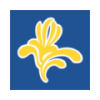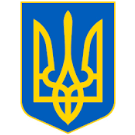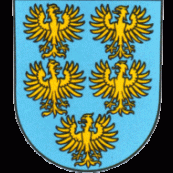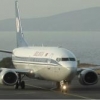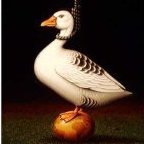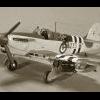Search the Community
Showing results for tags 'Dora Wings'.
-
L-20A/U-6A Beaver (DW48059) 1:48 Dora Wings via Albion Alloys The Beaver was a creation of De Havilland Canada (DHC) that was designed for use in Post War Canada as a Short Take-Off and Landing (STOL) “bush plane” that could be flown into rugged areas of the country, and quickly adapted to land on skis or floats as the need arose. It first flew in 1947, and entered service in the following year, initially in Canada, but soon found favour with other operators such as the military, who used it as a utility aircraft. The US bought a substantial fleet of almost 1,000 airframes that were initially designated as L-20A, but were re-named U-6A in 1962, with a small number of almost identical L-20Bs becoming U-6Bs at the same time. They served in all arms of the US military, with Army, Air Force and Navy, the latter having a pair that remain in service at time of writing, used as training airframes for glider-towing and other techniques appropriate to light-weight prop-engined types. There were fewer than 2,000 airframes built by DHC before the production line was closed, and although propositions have been made to recommence production of this well-regarded type using new engines and other modern equipment and materials, nothing has yet come to fruition, and the fleet is reducing through attrition despite the efforts of repair and renovation specialists such as Kenmore Air, who can return an airframe to zero-hours if you have deep enough pockets. The original Wasp Junior engine has been out of production for many years, and spares are naturally becoming harder to source, which has led some owners to consider a turboprop alternative that offers more power, wider availability of fuel, and lighter empty weight, but with a commensurately higher initial outlay. Many retired US airframes were restored and put on the civil register where they found a ready source of customers for their many talents, from sky-diving to scientific endeavours, with no sign of them being retired or replaced by a more capable aircraft. The Kit This new tool from Dora Wings (how do they do it?) is the first boxing from them of this delightful aircraft, and arrives in their now-familiar top-opening box with glossy over-printing on the subject of the box art, which adds an air of quality to the package. Inside the box are ten sprues in grey styrene, a large clear sprue, an extensive Photo-Etch (PE) brass fret, a sheet of pre-cut vinyl masks, two decal sheets, and an A5 instruction booklet that is printed in colour on glossy paper, with decaling profiles on the rearmost pages, and a paint chart on the rear cover that uses letter codes that are seen throughout the instructions, with codes for Mr. Hobby, Tamiya, AMMO, Hatak, Lifecolor, and generic colour names to assist you with picking your colours. Whenever we receive a Dora Wings kit, we know we’re in for a treat of detail and comprehensive instructions that hold our hands during the build process, including almost everything you need to build a compelling replica of your chosen subject. The sprues are full of parts with excellent levels of detail that includes finely engraved panel lines and rivets where appropriate, in addition to raised and recessed features inside and out that should please anyone looking over the sprues. Construction begins with the instrument panel, which is built from a flat styrene backdrop onto which three decals are applied, followed by three PE parts with the dials cut out, which is probably best glued in place after painting by using clear varnish that will also give the dial decals a sheen akin to glass. An alternative panel with engraved detail is also included, although it isn’t mentioned on the instruction page, but it can be used with the decals instead if you don’t enjoy working with PE. Extra PE levers are added in the next step along with a coaming, mounting the completed assembly on the cockpit floor along with two types of rudder pedals, the more substantial two-part units on the left side. A pivoting control column with simple yoke at the top is inserted into the centre in front of the panel, fitting a two-part lever further aft on the port side. Two seat base frames are each made from four parts, adding a cylinder under the pilot’s base, then fixing the L-shaped seat on top, and installing PE four-point belts for both crew, locating the legs in four holes each that are moulded into the floor. The rear seats are of the bench-type, supported by a triple-box frame with angled legs, fitting the seat cushion and back-rest from one part each, and inserting twin lap-belts into slots in the back of the cushions. They are installed in the next row on a set of raised adjuster rails, adding a two-seat canvas row behind that’s made from three parts with no belts, then bracketing the cockpit with a front and aft bulkhead to complete the assembly, which is then glued onto the fuselage floor, adding the sides after inserting small triangular parts on both sides at around head height. Sections of head-lining are fitted over the crew compartment at the front, choosing either one with roof-light cut-outs or without, depending on your decal option, attaching the fuselage sides beforehand. The fuselage roof is fitted over a short length of spar, adding a separate clear windscreen with integral nose cowling at the front, plus four roof-lights, and a two-part engine firewall that closes the fuselage. Crew doors and main cabin doors are both clear parts, with a smaller window further aft in the fuselage, repeating the layout on both sides. The elevators are made from a single upper surface, adding two lower skins, then the flying surfaces that are each two parts with ribbing moulded into them. They can be posed deflected if you wish, with rounded leading edges, and are mated with the fuselage later in the build, along with the tail fin and rudder panel, both made from two halves, the latter ribbed to match the elevators. Typically of Dora Wings kits, the engine is supplied as a well-detailed model in itself, starting with the intake spider, which has a central boss and nine separate L-shaped tubes, fitting an accessory pack to the rear, then gluing the growing assembly to the rear of the piston bank, which has a reduction bell-housing with integral push-rods applied to the front, and a thick exhaust collector ring at the rear, fitting it to the central ring in the nose after making the main landing gear struts from three parts each, plus two small wedge-steps near the top. The engine cowling is made from two halves with an optional intake at the bottom and matching cowling lip with the front of the intake moulded-in, or if not fitting the intake, a smooth cowling lip is used instead, slipping your choice of cowling over the engine, and adding a two-part D-intake to the cut-out near the top of the intake-less cowling. There is a choice of installations for the antenna and other equipment on the fuselage roof, the instructions advising you to refer to the painting profiles to decide which parts are appropriate to your decal choice. Unlike it’s namesake, this Beaver has wings that are separate assemblies made from upper and lower surfaces, with separate flaps and elevators made from two parts each, and a landing light installed flush with the leading edge of the port wing, adding small clear lights below and at the ends of the wingtips, then fitting the completed wings to the sides of the fuselage, and bracing them with a single strut beneath each one, with square pegs holding them in place at each end. The flying surfaces have five actuators fixed in slots along their lower lengths, adding a combined actuator/horn balance in the centre of the elevators, a pitot probe in the port wing, and a tubular crew step on each side beneath the cabin doors, each one made from three parts. While the model is still inverted, an exhaust with hollow tip insert at the end is fitted under the cowling, and a two-port cooler is mounted under the fuselage with a PE mesh fixed inside. The tail-wheel is made from two parts and fitted to a yoke mounted on a lightened strut, with three PE parts and a support, plus a T-shaped assembly in front that is made from PE and styrene parts. The main gear wheels are moulded in two halves, with a brake-hub, and a styrene washer in the centre so they can be left to rotate, with a stub axle holding them in place on the struts and optional PE hubs fitted to the outer face, again depending on your decal option. A tiny formation light is inserted into the tip of the tail fairing, and the final choice of two-bladed prop is made, sharing the same blade and axle parts, but choosing either a three-part boss or two-part spinner fairing to finish the assembly. Markings There are four decal options on the sheet, all wearing US Stars & Bars, but with differing colour schemes that depict three USAF and one Army bird. From the box you can build one of the following: L-20A Beaver (52-6138), 81st TFW, RAF Bentwaters, 1960 L-20A Beaver (55-0681), US Army #1583, L-20 No.584, Command A-7, Dusseldorf-Lohausen, Germany, 1962 L-20A beaver (51-6487), USAF #1064, Command AF-1, 5th Air Force, Seoul, 1953 U-6A Beaver (52-6092), 539th FIS, McGuire AFB, New Jersey, 1965 Decals are by Dora Wings’ usual partner, DecoGraph, which is a guarantee of good registration, sharpness and colour density, with a thin matt carrier film cut close to the printed areas. Conclusion A well-detailed model of this long-serving and much-loved light aircraft that got to see the world in the service of many Air Forces, Navies and civil operators. The build should proceed without pitfalls, and the detail will look good under a coat of paint with your choice of decals. It’s going to be the hi-viz orange one though, isn’t it? Very highly recommended. Review sample courtesy of Distributed in the UK by
-
Next Dora Wings project is 1/48th (and later in 1/72nd) de Havilland Canada DHC-2/L-20A/U-6A Beaver kits. 👍 At last a post-WWII aircraft kit from Dora Wings ! Don't forget: https://www.caracalmodels.com/cd48107.html Source: https://www.facebook.com/dorawingsofficial/posts/pfbid01U3HoSAWtXQKgh5fMyoPn9HmSZVSBJwGSEjAKBJMSbiNbuhLGLQXD2mPA6BJTGkYl V.P.
- 156 replies
-
- 26
-

-

-
Hello everyone. Future model from Dora Wings. There was a mistake with the numbers on the wings - they should be on the right wing, also below the wing... Decal from the future set. I hope you like the alternative to the old set from A.
-
After the 1/48th kit (link), here's the Dora Wings' 1/72nd de Havilland Canada DHC-2/L-20A/U-6A Beaver Source: https://www.facebook.com/dorawingsofficial/posts/pfbid05d81NT2pGyMrvnZAE7wHzdorsiQPL21sp6uyqh9Ckb4zraK2yiP9mvHnahGDz24Jl 3 D renders V.P.
- 43 replies
-
- 23
-

-

-

-
After the 1/72nd kit (thread) Dora Wings is to release a 1/48th Fairey Delta FD.2 - ref. ? Source: https://www.facebook.com/dorawingsofficial/posts/pfbid0h9GAuc8Sm5X6ZkjLdNC1VGD3V6q7rtidn34LF8rq5f1EEZUE1CHp3sNTFVsN5yg1l Test build V.P.
- 26 replies
-
- 10
-

-

-

-
- Fairey
- Dora Wings
-
(and 1 more)
Tagged with:
-
Dora Wings is to release a 1/72nd Fairey Delta FD.2 kit - ref. 72009 Source: https://www.facebook.com/permalink.php?story_fbid=2106721216225111&id=1929101897320378 V.P.
- 156 replies
-
- 13
-

-
- Fairey
- Dora Wings
-
(and 1 more)
Tagged with:
-
Dora Wings is working on new tool 1/48th Morane-Saulnier MS.405, 406 & 410 kits. - ref. DW48031 - Morane-Saulnier MS.406C-1 - Battle of France - released: https://dorawings.com/index.php?route=product%2Fproduct&product_id=130 - ref. DW48038 - Morane-Saulnier MS.405C-1 Source: https://www.facebook.com/DoraWings-1929101897320378/ Update V.P.
- 85 replies
-
- 6
-

-
- MS.406
- Morane-Saulnier
-
(and 1 more)
Tagged with:
-
New model from Dora Wings. I hope you like it.
-
#3/2025 Next one finished by my dad. It´s the "Foreign Users" 2022 edition of the 2020 released Dora Wings kit. The Dora Wings kits are somewhere betwen short-run and mainstream. Better to build than real short runs but still tricky. Especially a model like this with a parasol wing, all these struts, often hardly any alignement help and PE parts. regarding my dad´s age, bad eyesight and shaky hands, he did the best he could. Painted with Mr Paint White Aluminium, used EZ Line for the tailplane tension wires and between the outer wing struts. The windshileds are provided in the kit as clear film. Build thread here https://www.britmodeller.com/forums/index.php?/topic/235148217-spanish-civil-war148-morane-saulnier-ms230-republican-airforce/ The Morane Saulnier MS230 was the main training aircraft of the French Airforce in the 1930s. Six of them found their way to the Spanish Republican Airforce. Don´t know if they were only used as trainers or for recon too. None of them survived the civil war. One former French aircraft is painted in Spanish livery and displayed in the Museo del Aire in Madrid. DSC_0001 by grimreaper110, auf Flickr DSC_0002 by grimreaper110, auf Flickr DSC_0003 by grimreaper110, auf Flickr DSC_0001 by grimreaper110, auf Flickr DSC_0005 by grimreaper110, auf Flickr DSC_0006 by grimreaper110, auf Flickr DSC_0004 by grimreaper110, auf Flickr DSC_0002 by grimreaper110, auf Flickr DSC_0010 by grimreaper110, auf Flickr DSC_0011 by grimreaper110, auf Flickr DSC_0012 by grimreaper110, auf Flickr DSC_0013 by grimreaper110, auf Flickr DSC_0014 by grimreaper110, auf Flickr DSC_0015 by grimreaper110, auf Flickr DSC_0016 by grimreaper110, auf Flickr DSC_0017 by grimreaper110, auf Flickr DSC_0018 by grimreaper110, auf Flickr DSC_0021 by grimreaper110, auf Flickr DSC_0022 by grimreaper110, auf Flickr DSC_0006 by grimreaper110, auf Flickr DSC_0007 by grimreaper110, auf Flickr DSC_0023 by grimreaper110, auf Flickr DSC_0024 by grimreaper110, auf Flickr
-
Dora Wings is to release Republic P-47B/C & D (early) Thunderbolt kits in 1/48th and later in 1/72nd. Source: https://www.facebook.com/dorawingsofficial/posts/3084255388471684 3D renders - 1/48th Republic P-47B Thunderbolt V.P.
- 89 replies
-
- 21
-

-

-
- Thunderbolt
- P-47
-
(and 1 more)
Tagged with:
-
Not only in 1/48th (dedicated thread: link) Dora Wings is also preparing 1/72nd Vultee P-66 Vanguard kits. - ref. DW72040 - Vultee P-66 Vanguard Source: https://www.facebook.com/dorawingsofficial/posts/2980469298850294 Final 3D renders V.P.
- 13 replies
-
- 8
-

-
- P-66
- Dora Wings
-
(and 1 more)
Tagged with:
-
I bought this kit a little bit ago to build as part of my "Last Legs Ponies" project, and this GB is a great opportunity to get her built.
- 30 replies
-
- 9
-

-
- 1/72
- Last Legs Ponies
-
(and 1 more)
Tagged with:
-
Hi All, I have just completed a Pilatus Turbo Porter model within the Ukrainian kits Group Build. The prototype carried Japanese civil registration JA8221 and was used for 15 years between 1979 and 1994 by the Japan National Institute of Polar Research making flights from the Japanese Syowa Station in Antarctica. After retirement the airplane is demonstrated in the aviation museum in Komatsu. The Dora kit has been originally issued by BPK (another Ukrainian company) and was repacked by Dora with decals for some interesting markings also including a Swiss registered UN airplane and military and civil French aircraft. The kits contained plastic parts as well as two photoetch frets containing many parts that actually allow to build various versions of Pilatus. Also the kit provided resin wheels (look pretty much the same as plastic wheels in the kit) and two versions of exhaust pipes. I assembled the kit out of the box not using any aftermarket sets however I did not resist myself to make a number of corrections. Also because the Dora instruction is not indicating the differences between paint schemes, the walkaround photoes from Komatsu museum were my most watched webpage during the last four months. Major modification I made was a new cabin floor because the kit proposes to use the same part as the fuselage bottom and cabin floor thus making cabin floor far too low leading to the seats also seating loo low in the cabin. With a sliding door open this inaccuracy is becoming too obvious. Other mods included: - corrected engine radiator intake - modification of seat mounting struts - correction of the pilot seat - addition of the ceiling in the cabin - addition of the seat belts from the leftovers from other kits - removal of door sliding rails from the port side - added steps on the undercarriage struts - addition of the pin with a tail navigation light to the rear wheel - addition of hydraulic mechanism elements to the skis - addition of couple aerial covers on the top fuselage - addition of piping on the fuselage bottom - adjustment of aerial configuration on fuselage top in line with photos from Komatsu - installation of wire aerials and ski control struts - enabling rotation of the airscrew Some photoetch parts should not be installed on this version of Turbo Porter - primarily this relates to configuration of the grills and scoops on the front fuselage. Plus one should check aerials configuration to reference photoes as these may significantly differ between various Turbo Porters. More information and in process photos are in my WIP thread here Model is painted using Vallejo metallics, Vallejo black and white paints and Hobby Color red H327 and is finished with gloss and then satin Microscale. Decograph decals worked flawlessly. Dora instruction for Japanese version says nothing about stencils while there is a set of white stencils on a decal sheets and these correspond to what you see on photos from Komatsu museum. So I applied stencils referring to the real aircraft photos. Additionally in line with real aircraft photos I tinted side illuminators with transparent golden and top side of the front screen with transparent green. Thanks for watching and appreciations! Cheers, Dennis
- 14 replies
-
- 45
-

-

-

-
- PC-6
- Dora Wings
-
(and 1 more)
Tagged with:
-
Hi All, Let me also start my GB thread here. My choice for this one would be Dora Wings 1/72 Turbo Porter model. The kit itself I think is produced by BPK which is also a Ukrainian kit maker. So should totally fit the GB theme! Dennis
- 55 replies
-
- 2
-

-
- 1/72
- Dora Wings
-
(and 1 more)
Tagged with:
-
This is a bit of a lump of an aircraft and far from a good-looking. Bit of back ground info - https://www.key.aero/article/database-vultee-vengeance It also looks like it might test my modelling skills. A lot of parts (for me) and PE to contend with, saying that it all looks nicely moulded with plenty of detail. Decals are by Decograph and there is also a vinyl canopy mask. George
- 7 replies
-
- 14
-

-
- Vultee Vengeance Mk IA
- Dora Wings
-
(and 1 more)
Tagged with:
-
Dora Wings is to release 1/72nd Noorduyn C-64 Norseman kits - ref. Would maybe proposed later in the 1/48th scale. Fingers crossed. Source: https://www.facebook.com/dorawingsofficial/posts/2961098897454001 3D renders V.P.
- 94 replies
-
- 13
-

-
The new Dora Wings project is a 1/32nd (later in 1/48th & 1/72nd scales) Dewoitine D.520 kit - ref. 32?? Source: https://www.facebook.com/dorawingsofficial/posts/pfbid02nVTphb3r5nrS5zz1s6716ivuM5zAkarsdDdaXmrf8AF8CKERA4Nv5L8y7YFxa8K7l First renders V.P.
- 13 replies
-
- 3
-

-

-
Dora Wings new project is a 1/48th Vultee P-66 Vanguard Source: https://www.facebook.com/1929101897320378/photos/a.2872448652985693/2872448836319008/ V.P.
- 45 replies
-
- 5
-

-

-
- Dora Wings
- Vanguard
-
(and 1 more)
Tagged with:
-
New Dora Wings project: a family of 1/48th Caudron Simoun kits. - ref. DW48028 - Caudron C.630 Simoun https://dorawings.com/1-48/caudron-c-630-simoun - ref. DW48030 - Caudron C635 Simoun - ref. DW48040 - Caudron C.631/633 Simoun Source: https://www.facebook.com/permalink.php?story_fbid=2496429487254280&id=1929101897320378 V.P.
- 31 replies
-
- 9
-

-

-
- Dora Wings
- Simoun
-
(and 1 more)
Tagged with:
-
After the 1/48th kit (link) here's the Dora Wings 1/72nd Vultee A-31/35 Vengeance kit - ref. DW72038 Source: https://www.facebook.com/dorawingsofficial/posts/3097956153768274 Final renders V.P.
- 30 replies
-
- 11
-

-
Hi I finished my Vanguard Don't search weatherinf on this plane. In the temperate scheme the Vanguard was used only for test and didn't have any operational history in British Color The kit is slighty difficult The tubular structure is fragile The gear legs construction lack support surface But at last you have on your deck a beautifull kit and an very uncommon plane Thanks to Dora Wings for his interest to this aircraft And other pics at this link Vultee Vanguard
- 8 replies
-
- 41
-

-

-
- Dora Wings
- Vanguard
-
(and 1 more)
Tagged with:
-
Hi all My Super Mystere is almost finished, I decided to start a new build This time I choosed a kit recently in my stach : the Vultee Vanguard from Dora WIngs I already built a Dora Wings kit with the Miles Master and keep a good memory For the story you can go to the kit review at this adress If the kit propose 3 sweedish plane (one 1940 plane and 2 what if), I choosed the british model. For serial, because only one plane was tested I have only one choice
- 19 replies
-
- 5
-

-
- Dora Wings
- Vultee
-
(and 1 more)
Tagged with:
-
After the 1/48th kits (thread) here are the Dora Wings 1/72nd Curtiss-Wright CW-22 kits. - ref. DW72??? - Curtiss-Wright CW-22B Source: https://www.facebook.com/story.php?id=100067979693570&story_fbid=815442914065024 Test build V.P.
- 5 replies
-
- 2
-

-
- CW-22
- Dora Wings
-
(and 1 more)
Tagged with:


